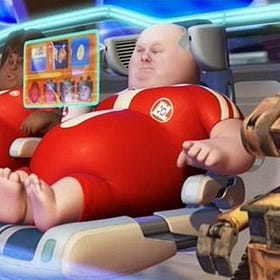Contains No Active Cultures
How today's world simultaneously shits on, and longs for, real culture.
Yesterday, I watched several minutes of a walking tour through Rome that appeared in my YouTube feed (see above). If I was only paying attention to the top two-thirds of the screen, I would appreciate the magnificence of the Colosseum, Trevi Fountain, and other sites the video explores. Unfortunately, I could see the bottom third of the screen, which showed tens-of-thousands of tourists lumbering and videoing their way through the ancient structures. The video showed nary a single actual Roman citizen living his or her life —just listless visitors trying to glean whatever culture and beauty they can before returning to their dull lives in Pittsburgh, Beijing, or wherever.
I recently learned how to make yogurt, a simple process that involves combining about eight parts fresh milk with one part of previously made yogurt. The milk-yogurt mixture is stored in a warm environment to ferment so the bacteria in the yogurt, also known as cultures, can propagate and populate the fresh milk, thereby making a new batch of yogurt. These so-called “good bacteria” are what gives yogurt its taste and builds a healthy gut biome that promotes good digestion, immunity, and cognition. The good bacteria of fresh yogurt is only possible through the cultural inheritance of previous generations of yogurt.
Ancient Rome’s population topped out at about one million citizens in the first and second centuries BCE. These ancient Romans lived and worked in Rome, making and cooking food, making and raising children, building and maintaining buildings and roads, making art and music and plays, and so forth. Ancient Rome inherited much of its culture from ancient Greek culture, which inherited its culture from the Phoenicians and other ancient civilizations. Like gut-restoring yogurt, Rome’s greatness —the stuff tourists visit today —came about by combining parts of old cultures with new populations, which in turn produced a distinct, new culture.
The city of Rome had over 17 million tourists in August, 2023 ; this was against a backdrop of 4.3 million permanent residents. If these tourists are like most tourists, they produce nothing: they don’t make or cook food, nor build or maintain buildings, nor make art and music. These tourists’ sole occupation is consuming what’s left of distant cultures: crowding and uglifying monuments, buying kitschy souvenirs, staring at screens, occupying spaces that could be for resident Romans. In yogurt-making terms, it’s like combining 100,000 parts fresh milk with one part yogurt culture.
Out-of-Shape, Billionaire Technology Investor Can’t Get Enough Technology, Money
Last week, famed venture capitalist Marc Andreeson published “The Techno-Optimist Manifesto.” In it, Andreesen boldly claims “there is no material problem —whether created by nature or by technology —that cannot be solved with more technology.” (More tech than what, who knows? Just
For all the mind-boggling (and numbing) things technology makes possible, I see few things being produced today that will exist, much less be interesting, 2,000 years from now. Whether it’s Tiktok or the Cybertruck, much of today’s technological development reflects an obsession with novelty and remove from history, not reverence and evolution on it. Moreover, a great deal of web-based technology is directed towards accessing things from the past : books, music, art, philosophy, etc. It’s never been easier to consume culture, and it’s never been a worse time for producing and being enriched by it.
Song of the day:



